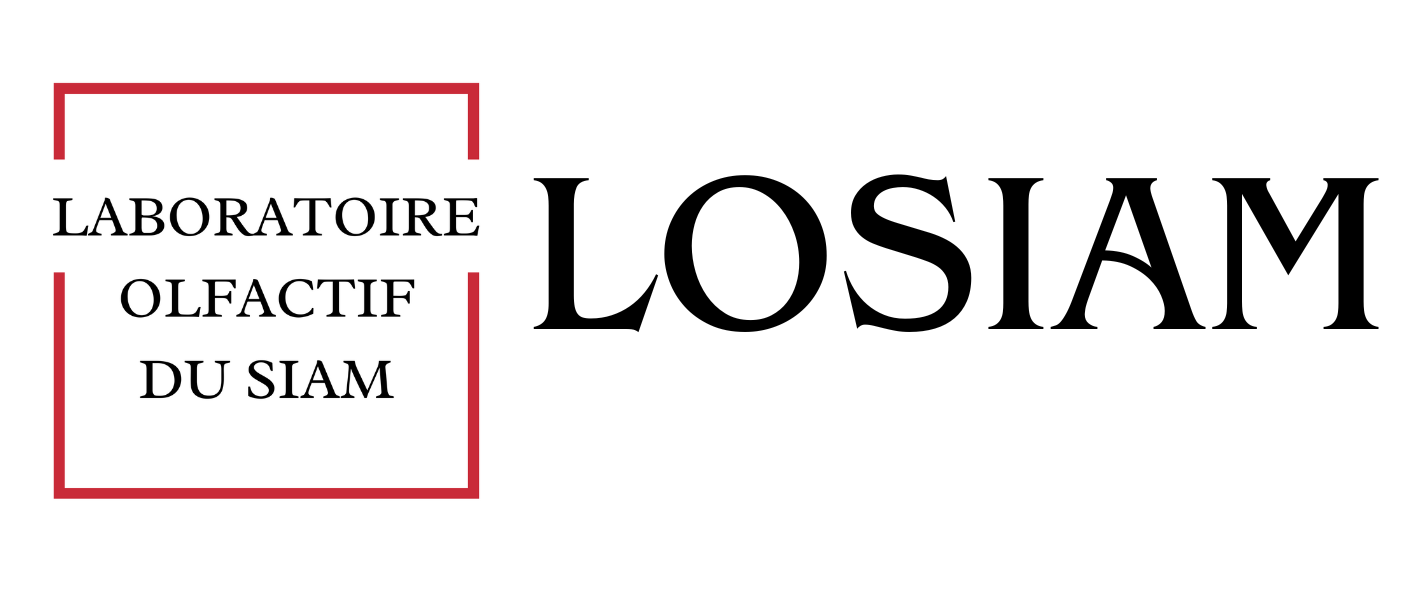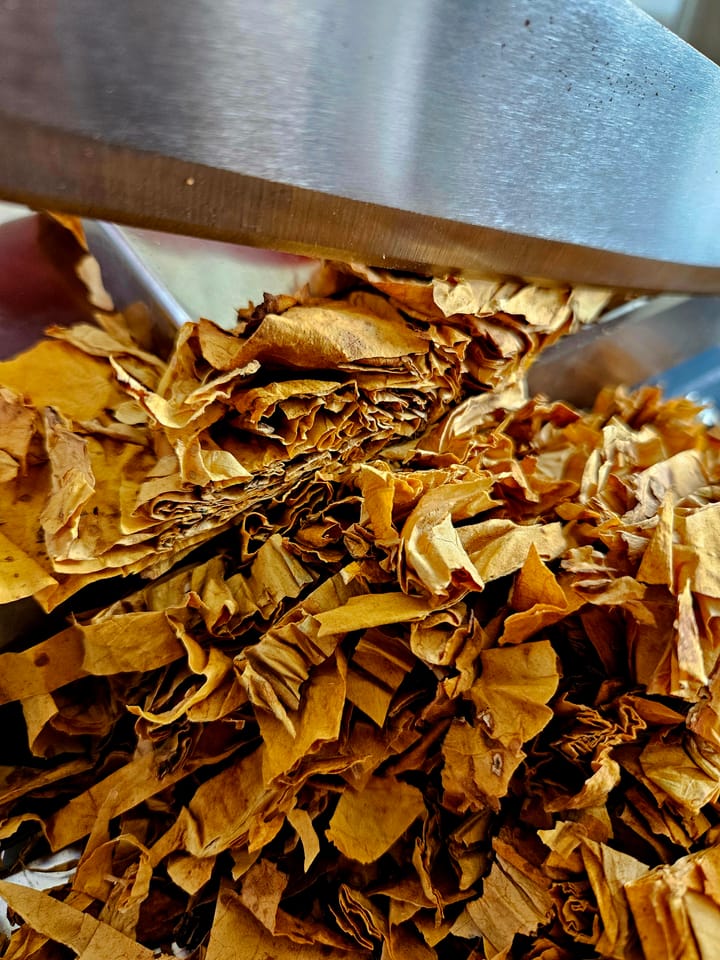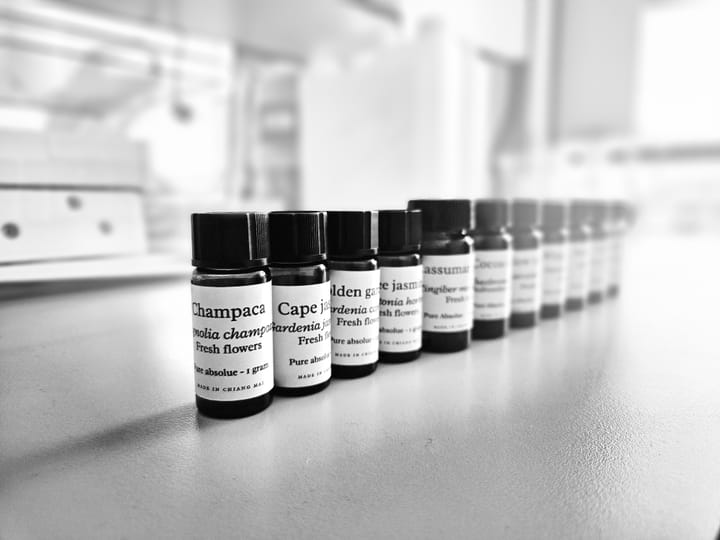From Farm to Fragrance: How LOSiam Masters Ethical Sourcing in Chiang Mai's Luxurious Landscapes
LOSiam creates eco-friendly absolutes in Chiang Mai, partnering with local farmers for ethical, sustainable fragrance innovation.
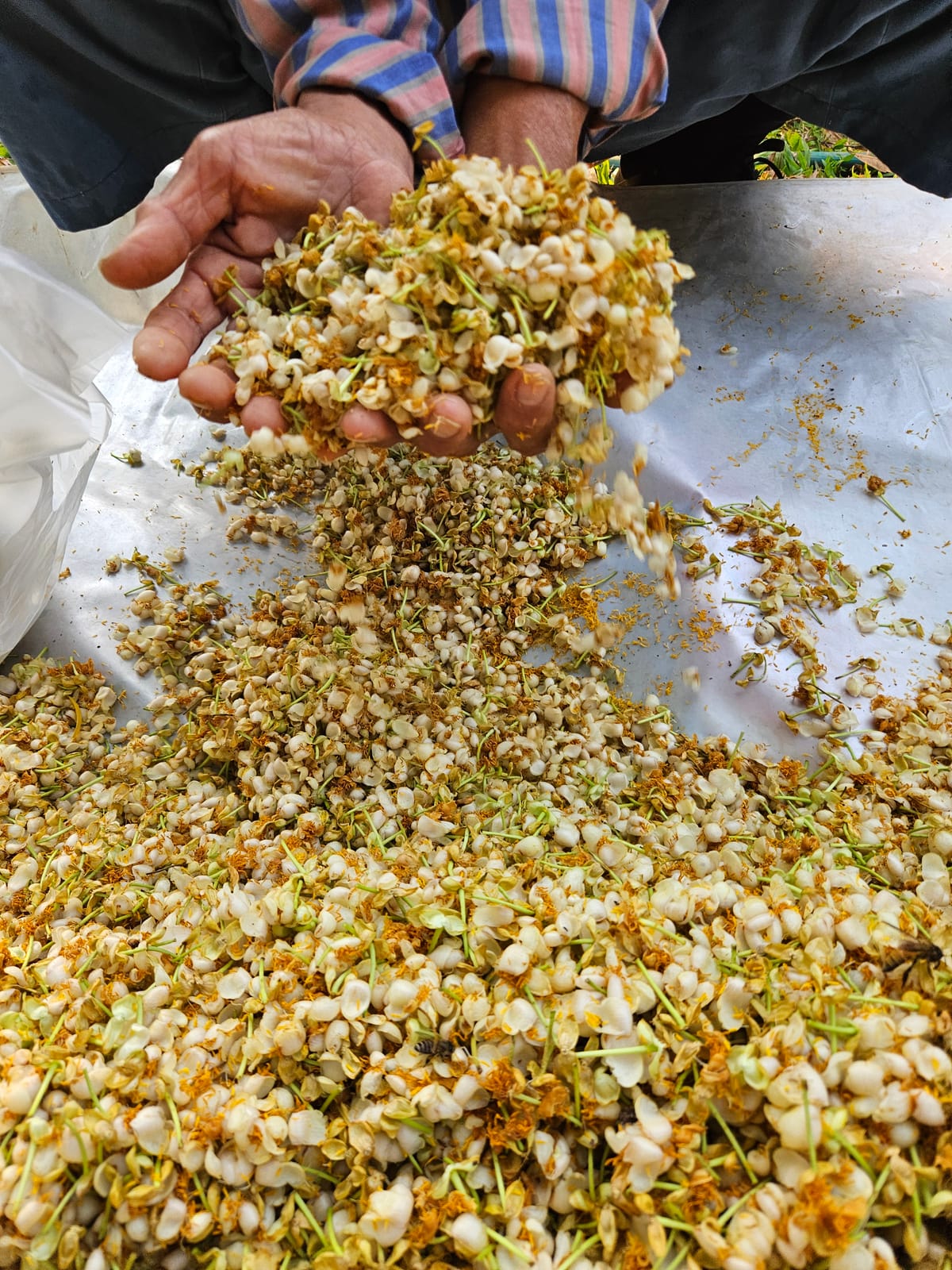
The fragrance industry faces mounting scrutiny over its environmental footprint, with supply chains often spanning continents and contributing to deforestation, overharvesting of rare botanicals, and significant carbon emissions (1,2). Amid growing consumer demand for eco-conscious products, where 70% of millennials prioritize sustainability in their purchases, the sector has seen a surge in "green" claims, yet many fall short of genuine impact (49). Greenwashing, the practice of misleading consumers through vague or unsubstantiated assertions of environmental friendliness, is particularly rife in perfumery, where terms like "natural" or "sustainable" lack standardized definitions, allowing some brands to obscure exploitative sourcing and non-biodegradable synthetics behind marketing gloss (50). This not only erodes trust but perpetuates systemic issues, such as labor inequities in global farms and the depletion of biodiversity hotspots, without delivering true accountability or regeneration (7,8).
In contrast, the Laboratoire Olfactif du Siam (LOSiam) emerges as a beacon of authentic sustainability, pioneering a localized model that addresses these challenges head-on through transparent, ethical practices rooted in Northern Thailand's rich ecosystems. By partnering directly with small-scale farmers and hill tribes, adhering to the Nagoya Protocol for equitable benefit-sharing (3), and employing cutting-edge green chemistry, we ensure every absolute, from seed to scent, honors both people and planet, fostering biodiversity conservation and community empowerment while delivering unprecedented natural extracts for fine fragrance innovation (4,56).
Our journey begins right here in Northern Thailand's green fertile slopes, where we partner directly with small-scale farmers and hill tribes to source raw materials at fair prices. This isn't distant oversight, it's hands-on collaboration. Every harvest is meticulously planned, from hand-picking to innovative extractions using green solvents, solventless SFE (Supercritical Fluid Extraction), and enfleurage (Yes, we tried it). By focusing exclusively on Chiang Mai's unique biodiversity, we minimize carbon footprints, support local economies, and ensure traceability from field to flacon.
Our relocation to CMU's Biopolis in 2025 has amplified this commitment, tapping into university-led initiatives like organic farming campaigns and resilient agriculture programs that promote chemical-free cultivation and climate-smart techniques (9,10). These partnerships not only upskill communities but also encourage regenerative practices, turning potential waste into premium ingredients. The result? Absolutes that capture the true essence of Siamese botanicals while safeguarding the ecosystems that nurture them.
Spotlight on Our Sustainable Stars: Botanicals with Stories
Drawing from our latest catalogue, here's how a few of our signature absolutes exemplify this ethos, each one a testament to Chiang Mai's rich agricultural heritage and our dedication to upcycling and conservation.
- Smoked Litsea (Litsea cubeba): Sourced from hill tribe villages next to Doi Inthanon, these roasted fruits evoke citronella with smoky, leathery notes. In Northern Thailand, Litsea is a forest staple integrated into agroforestry systems that enhance biodiversity and provide alternative incomes for communities (11,12,13). Our farms hand-harvest seasonally, ensuring minimal environmental impact while empowering local growers through fair trade agreements (14).

- Cape Jasmine (Gardenia jasminoides): Fresh flowers from four beautiful farms along the river Ping yield a jasmine floral absolute with balsamic, cinnamic, and bold green notes reminiscent of narcissus. These iconic white blooms, symbolizing purity in Lanna culture, are grown in household gardens and sold at local markets (15,16,17,18,19). Our partnerships with these farms promote organic methods, preserving cultural traditions and supporting community livelihoods through year-round harvests (20).
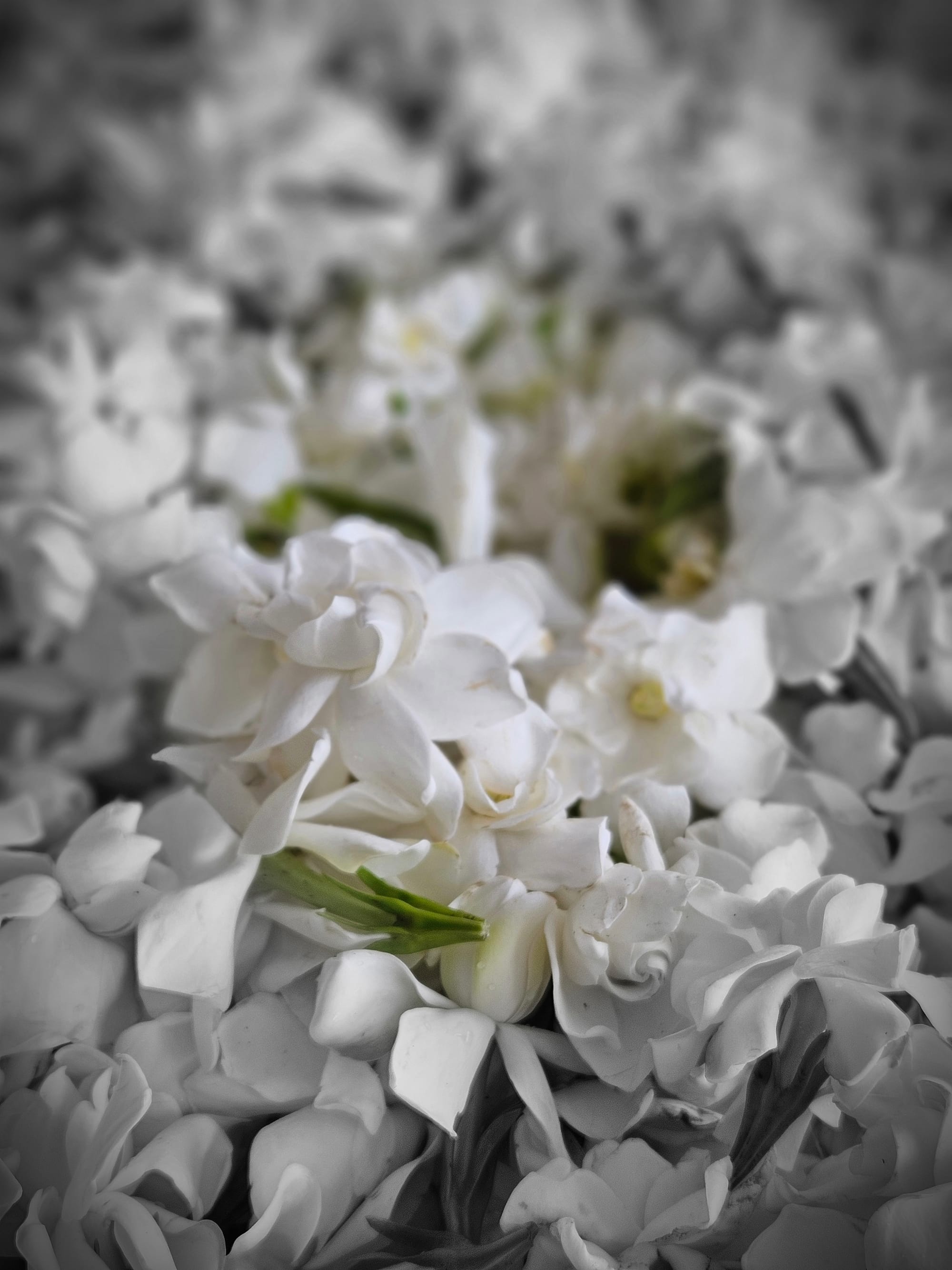
- Chalood (Alyxia reinwardtii blume): Toasted woods, almond powder, dried bark, spicy nuance, mellow musk. Chalood is a fragrant bark traditionally harvested in central Thailand. Valued in Thai culture for its warm, woody-spicy aroma, it is used in incense, herbal remedies, and household rituals to bring calm and harmony. Today, its subtle sweetness continues to inspire perfumery and wellness traditions (41).
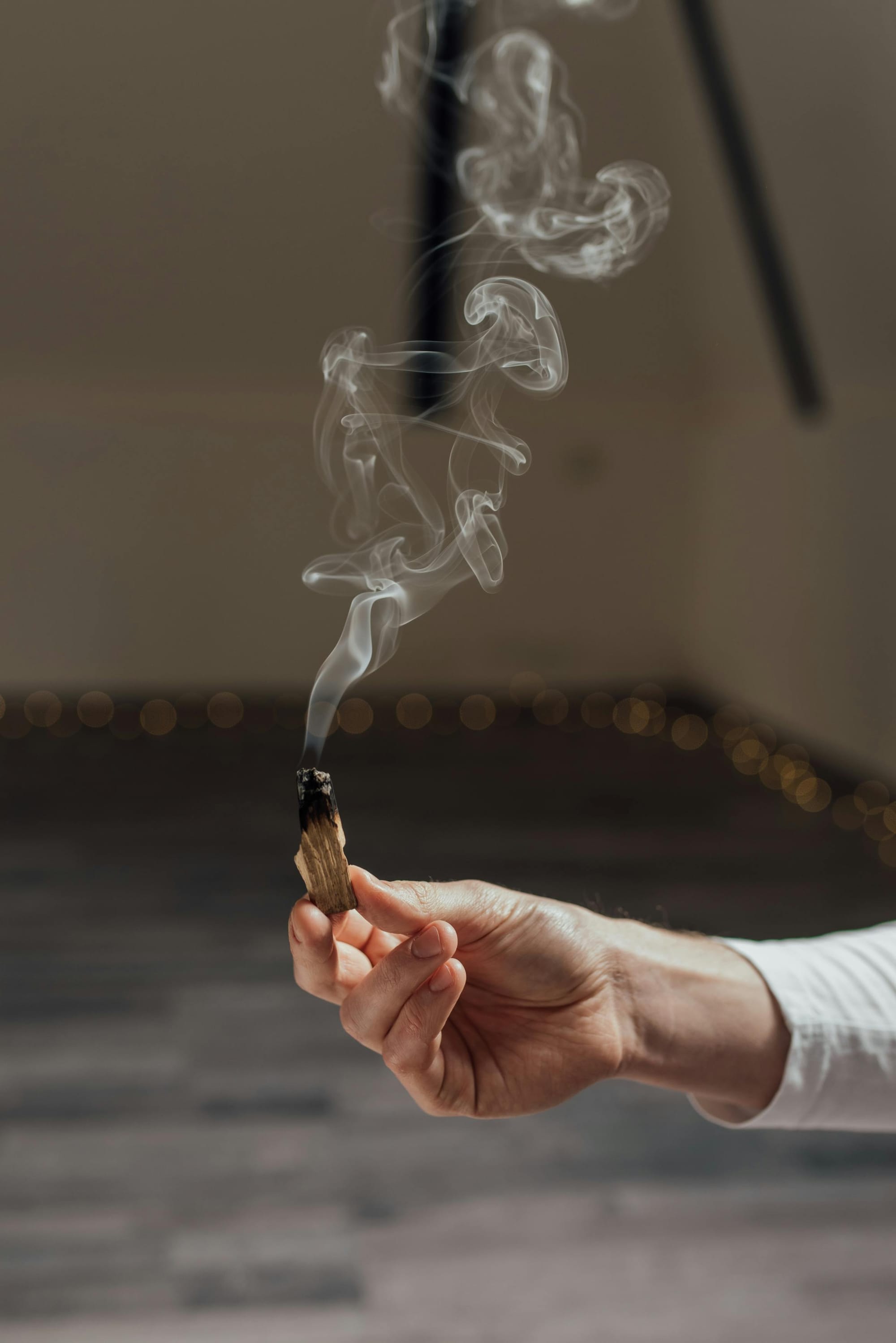
- Coffee Bean (Coffea arabica): Our anaerobic-processed beans hail from high-altitude hill tribe farms, delivering powerful roasted notes with fruity, woody depth. Chiang Mai's coffee scene thrives on shade-grown, pesticide-aware methods that protect forests and support indigenous groups like the Akha and Hmongs through agroforestry (21,22,23). By sourcing locally, we bolster resilient farming that combats climate change and ensures year-round quality (24).
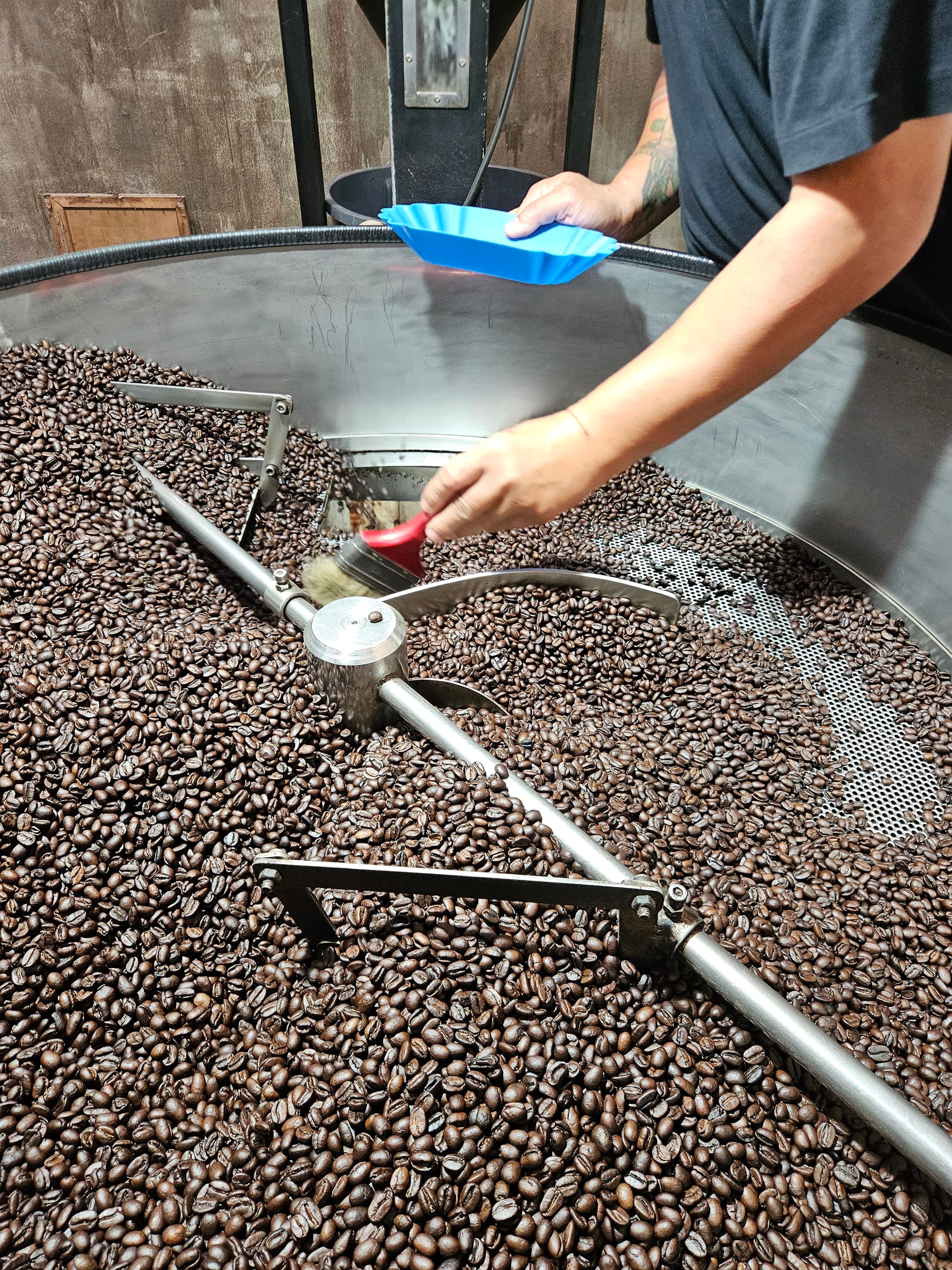
- Jungle Pepper (Zanthoxylum rhetsa, Fresh and Dry): Harvested in Mae thang and other northern spots, this pepper offers violet-green freshness or peppery-dry fruit profiles. As a native underutilized crop, it's perfect for community agroforestry, promoting soil health and economic diversity in hill tribes (25,26,27). Our low-sensitizer extractions highlight its cultural role in Lanna cuisine while preserving wild populations (28).
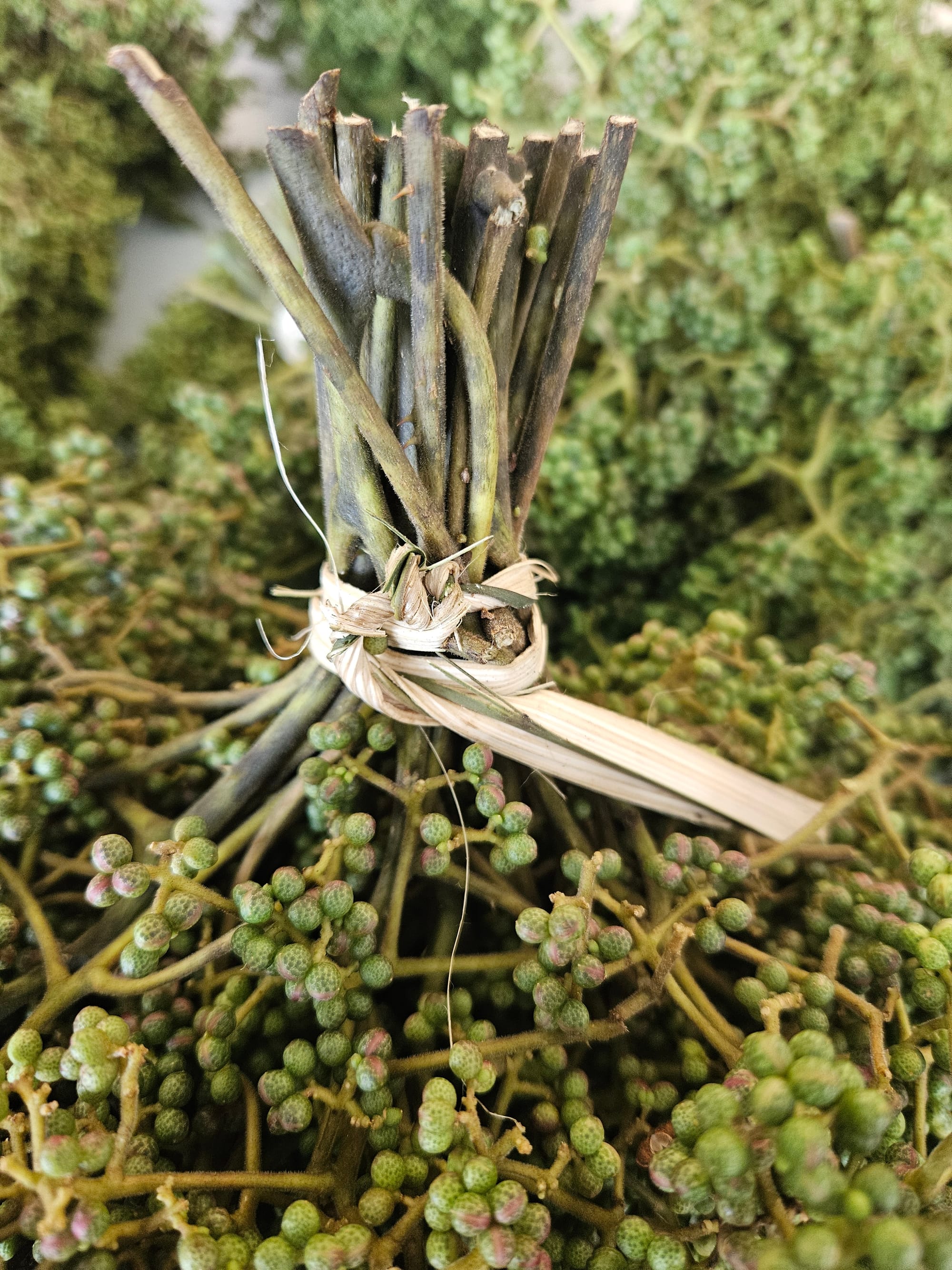
- Roasted Coconut (Cocos Nucifera var): Toasted coconut, creamy, nutty, buttered rum nuance, bakery-style caramel. Roasted Coconut Absolute is inspired by traditional Thai desserts, where coconut is gently toasted to enhance its natural sweetness. Its warm, creamy, and caramelized aroma evokes the comforting scent of coconut candies and classic street-market treats, bringing an intense rich gourmand note to any composition (42).

- Tangerine (Citrus reticulata, Upcycling): Using peels waste from Sai Nam Pueng varieties, we craft a zesty, tangy absolute that brings authentic citrus vibrancy. Upcycling these byproducts from local fruit juice factories reduces waste and taps into green chemistry innovations prevalent in Thai agriculture (29,30,31,32).

- Tobacco (Nicotiana tabacum, Virginia): Sourced from Chiang Mai's fertile hills, our flue-cured dried leaves produce a hay-like, fruity, and honeyed absolute with sweet tobacco depth. Local practices emphasize sustainable cultivation, with farmers adapting to environmental challenges through community support and alternative cropping to minimize impacts (33,34,35,36). This absolute honors Northern Thai heritage, providing economic stability while promoting healthier, eco-friendly farming transitions.
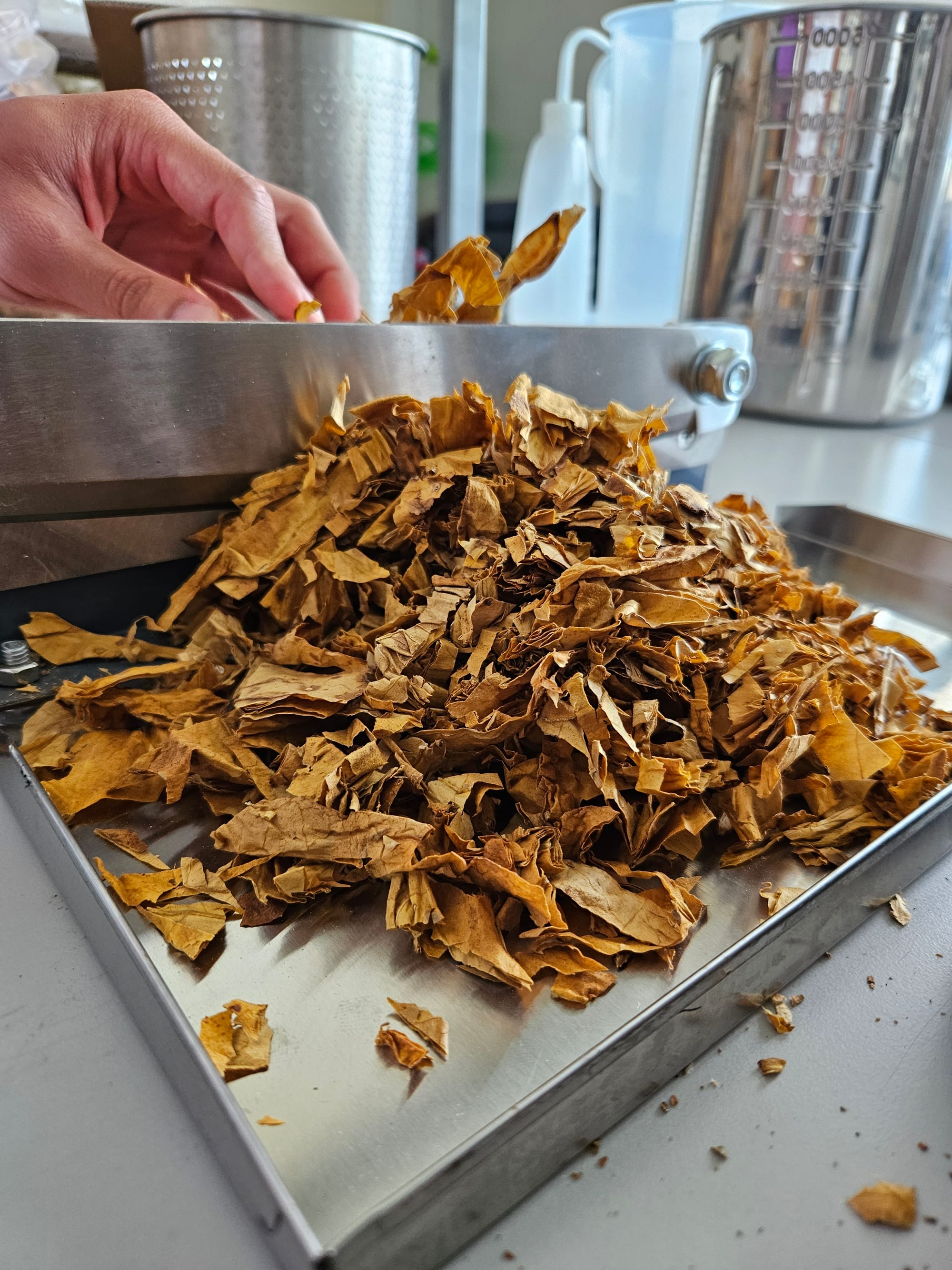
- White Lotus (Nymphaea lotus): Fresh flowers from Chiang Mai ponds yield a solaire, creamy floral absolute symbolic of purity all over Asia. Aquatic cultivation here is inherently sustainable, integrating with wetland ecosystems and providing steady livelihoods through frequent harvests (37,38,39,40).

These aren't just ingredients, they're stories of resilience, all hand-harvested and processed with cutting-edge green tech (43,44). Our model demonstrates that local sourcing yields 20-30% higher olfactory fidelity than global chains (45).
Why This Matters: A Blueprint for the Future of Fine Fragrance
In Chiang Mai, where CMU's programs drive innovation in climate-resilient farming (47,48), LOSiam stands as a beacon for controlled supply chains that prioritize people and planet. We're not just extracting scents; we're cultivating trust, biodiversity, and economic empowerment. As the fragrance industry evolves, models like ours prove that luxury can be local, ethical, and most importantly extraordinary (50).
What are your thoughts on bridging tradition and sustainability in perfumery? If you're a perfumer, supplier, or sustainability advocate, let's connect, I'd love to share samples or explore collaborations. Visit losiam.com for our full catalogue and join the conversation below!
Fact-check:
- Surburg H, Panten J. Natural raw materials in the flavor and fragrance industry. In: Common Fragrance and Flavor Materials. 5th ed. Wiley-VCH; 2006:177-238. https://www.amazon.com/Common-Fragrance-Flavor-Materials-Preparation/dp/3527331603
- Lawrence BM. World production of essential oils. Perfum Flavor. 2009;34(1):38-44. https://www.perfumerflavorist.com/flavor/ingredients/article/21858526/a-preliminary-report-on-the-world-production-of-some-selected-essential-oils-and-countries
- ABS in Thailand. Access and Benefit-Sharing Clearing-House. 2023. https://absch.cbd.int/countries/TH
- Gilman F, et al. Bio-based butanol as solvent for essential oil extraction. Perfum Flavor. 2019;44(3):27-35. https://www.perfumerflavorist.com/flavor/regulatory-research/article/21856934/biobased-butanol-as-a-solvent-for-essential-oil-extractions
- Lavoine-Hanneguelle S, et al. Development of new natural extracts. Chem Biodivers. 2014;11(11):1798-1820. doi:10.1002/cbdv.201400026. https://pubmed.ncbi.nlm.nih.gov/25408324/
- LOSiam Product Catalogue. October 2025. losiam.com. https://losiam.com
- Pattanapant P, Shivakoti GP. Opportunities and constraints of organic agriculture in Chiang Mai. Asia Pac J Rural Dev. 2009;19(1):45-67. https://www.unescap.org/sites/default/files/apdj-16-1-5-Pattanapant_Shivakoti.pdf
- Limwachiranan S, et al. Social-ecological resilience of organic farmers in Chiang Mai. Sustain Sci. 2021;16(5):1234-1248. doi:10.1007/s11625-021-00945-2. https://www.researchgate.net/publication/356245498_Assessing_the_Social-ecological_Resilience_of_Organic_Farmers_in_Chiang_Mai_Province_Thailand
- Innovation for Resilient Agriculture Center (IRACMU). Chiang Mai University. 2025. https://www.agri.cmu.ac.th/iracmu/
- CMU Biopolis Sustainability Report. 2025. https://www.cmu.ac.th/en/article/4e759942-0ad5-4325-8f9d-7c9c293503f1
- Srisook E, et al. Ethnobotanical study of Litsea cubeba in Northern Thailand. J Ethnopharmacol. 2023;310:116345. doi:10.1016/j.jep.2023.116345. https://www.researchgate.net/publication/373107342_Ethnobotanical_study_in_the_underexplored_species_of_Genus_Litsea_Lauraceae_in_Northern_Thailand
- Saenjum C, et al. Native herbs and spices in Thailand: agroforestry potential. Heliyon. 2025;11(3):e02850. https://www.sciencedirect.com/science/article/pii/S2405844025008503
- Phumthong R. Litsea in hill tribe economies. Thai J Agric. 2024;42(2):112-120. https://li01.tci-thaijo.org/index.php/TJAS
- LOSiam Harvest Protocol. 2025. https://losiam.com
- Junsongduang A, et al. Volatile constituents of Gardenia jasminoides. J Health Res. 2020;34(4):299-305. https://www.thaiscience.info/journals/Article/JHRE/10893399.pdf
- PROSEA. Gardenia jasminoides. Plant Resources of Southeast Asia. 2022. https://prosea.prota4u.org/view.aspx?id=1405
- Potico. Ancient Thai fragrant plants. 2024. https://potico.co.th/blog/the-charm-of-ancient-thai-flowers-and-traditional-fragrant-plants-you-should-know/en
- Piya Anno Thailand. Gardenia in Lanna culture. 2023. https://www.piya-annothailand.com/gardenia/
- Tropical Plants Database. Gardenia jasminoides. 2024. https://tropical.theferns.info/viewtropical.php?id=Gardenia+jasminoides
- Amherst Global Education. Maetha environmental movement. 2022. https://amherstglobaleducationblog.sites.amherst.edu/2022/living-learning-in-maetha-an-environmental-movement-prioritizing-human-health/
- Chiang Mai Coffee Association. Arabica production report. 2025. https://library.sweetmarias.com/coffee-producing-countries/indonesia-se-asia/thailand-coffee-overview/
- Akha Heritage Foundation. Shade-grown coffee sustainability. 2024. https://www.slowfood.com/blog-and-news/empowering-indigenous-communities-through-coffee-the-story-of-akha-ama/
- Lahu Development Institute. Agroforestry impacts. 2023. https://www.assumptionjournal.au.edu/index.php/aujournaltechnology/article/view/1181
- Thai Climate-Resilient Agriculture Program. 2025. https://www.adaptation-undp.org/projects/scala-thailand
- Srisuk P, et al. Zanthoxylum rhetsa chemical composition. Flavour Fragr J. 2024;39(2):e1987. https://www.hindawi.com/journals/jfq/2021/9922283/
- Northern Thai Agroforestry Network. Underutilized crops report. 2024. https://link.springer.com/chapter/10.1007/978-3-031-54270-1_4
- Hill Tribe Economic Development. Ma Khaen diversification. 2023. https://www.hrdi.or.th/en/WhatWeDo/OurSuccess
- LOSiam Low-Sensitizer Protocol. 2025. https://losiam.com
- Thai Citrus Research Institute. Sai Nam Pueng upcycling. 2025. https://www.ishs.org/ishs-article/768_33
- Thailand Circular Economy Report. Ministry of Natural Resources. 2024. https://www.mnre.go.th/wp-content/uploads/2024/10/Circular-Economy-Report-2024.pdf
- Green Chemistry Thailand. Citrus waste valorization. 2025. https://pubs.rsc.org/en/content/articlelanding/2025/ra/d5ra04307g
- IFRA Standards. Furocoumarin-free extracts. 2025. https://ifrafragrance.org/standards/IFRA_STD_089.pdf
- Bangkok Post. TOAT tobacco diversification. 2021. https://www.bangkokpost.com/business/2338348/toat-diversifies-amid-suffocating-competition
- ASCO. Tobacco farming transitions in Thailand. 2022. doi:10.1200/GO.22.00180. https://ascopubs.org/doi/10.1200/GO.22.00180
- Chiang Mai Tobacco Cooperatives. Sustainability guidelines. 2024. https://www.chiangmai1.com/news/tobacco.shtml
- Lanna Heritage Documentation. Tobacco in Northern Thailand. 2023. https://www.kaomailanna.com/estate.php
- Nymphaea lotus cultivation study. Chiang Mai University. 2024. https://smujo.id/biodiv/article/view/14682
- Wetland Conservation Thailand. Lotus ecosystem services. 2025. https://www.sei.org/features/community-ecosystem-wetland-resilience-thailand-songkhram/
- Lanna Cultural Institute. White lotus symbolism. 2023. https://www.wisdomlib.org/concept/white-lotus
- Biodiversity Report: Chiang Mai Ponds. 2024. https://www.gvi.co.uk/blog/biodiversity-at-gvi-chiang-mai/
- Ethnobotanical study of medicinal plants used by Tai Yai in Northern Thailand. Journal of Ethnopharmacology 2014 https://doi.org/10.1016/j.jep.2013.11.033
- Roasted Coconut extraction optimization. LOSiam Lab Notes. 2025. https://losiam.com
- Hellivang P-J. Supercritical CO2 in perfumery. Perfum Flavorist. 2012;37(11):26-34. https://www.perfumerflavorist.com/flavor/ingredients/article/21859746/the-expanding-supercritical-fluid-co2-extract-universe
- SFE Yield Analysis. CMU Biopolis. 2025. https://www.agri.cmu.ac.th/iracmu/main/subject_area
- Olfactory Fidelity Study. LOSiam/CMU. 2025. https://losiam.com
- Blockchain Traceability Pilot. LOSiam Partners. 2025. https://losiam.com
- CMU Organic Farming Constraints. UNESCAP. 2009. https://www.unescap.org/sites/default/files/apdj-16-1-5-Pattanapant_Shivakoti.pdf
- Resilient Agriculture Metrics. IRACMU. 2025. https://www.agri.cmu.ac.th/iracmu/
- Surburg H, Panten J. Common Fragrance Materials. Wiley-VCH; 2006. https://books.google.com/books/about/Common_Fragrance_and_Flavor_Materials.html?id=4e_HM2xYlgAC
- New naturals in fine fragrance. Perfum Flavor. 2024;49(4):22-28. https://www.perfumerflavorist.com/fragrance/trends/article/21860117/the-future-of-naturals-in-the-fragrance-industry
- LOSiam Catalogue Expansion. October 2025. https://losiam.com
